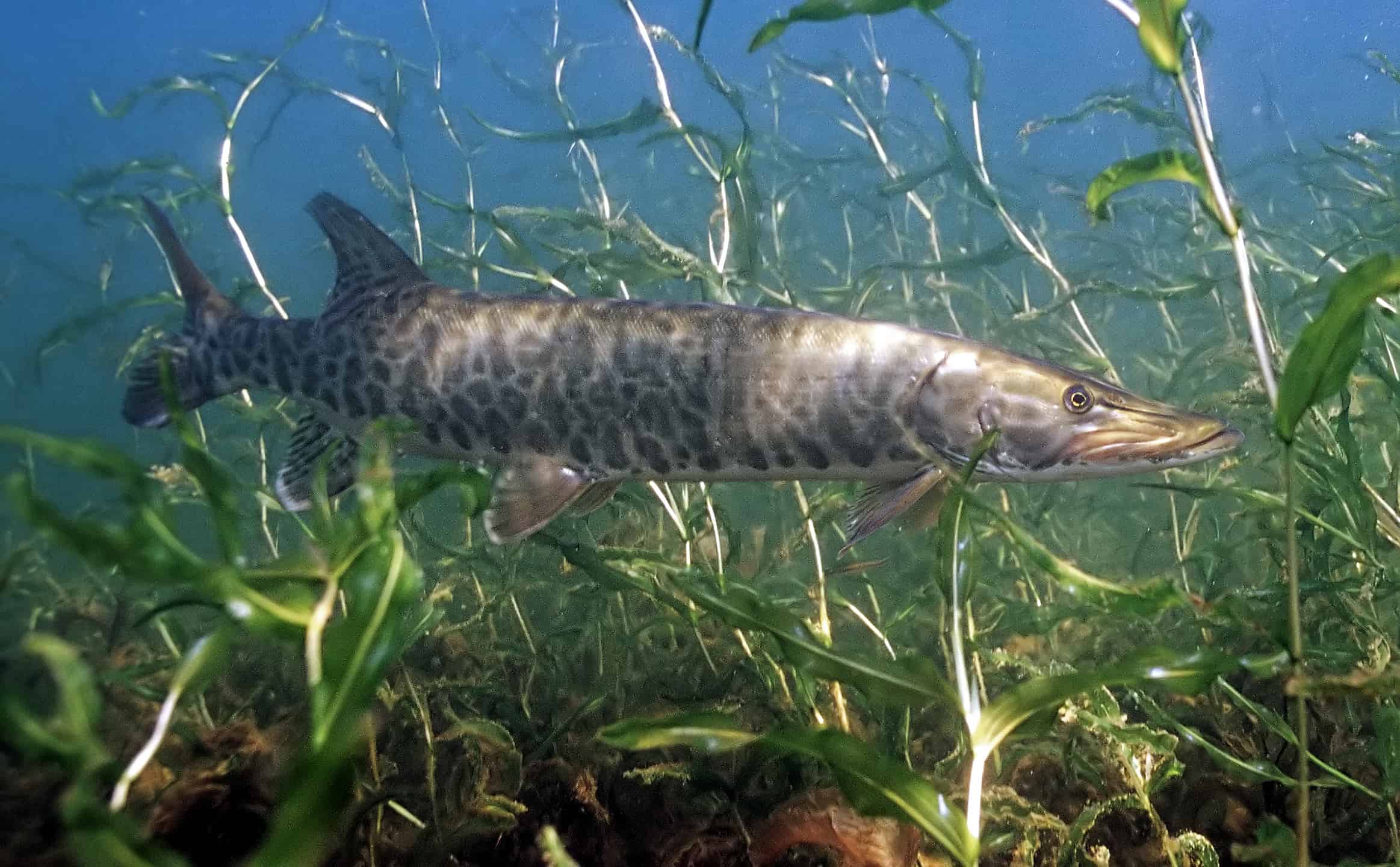Wisconsin is a state located in the Midwest region of the United States. It shares borders with Illinois, Iowa, Michigan, Minnesota, and Lake Michigan to the east. The state covers an area of approximately 65,500 square miles and has a population of around 5.8 million people.
Known as America’s Dairyland due to its large dairy farming industry, Wisconsin is also known for its beautiful natural landscapes, which include forests, lakes, and rivers. Some popular tourist attractions in the state include the Wisconsin Dells water park resort area and Door County, which offers scenic drives along Lake Michigan.
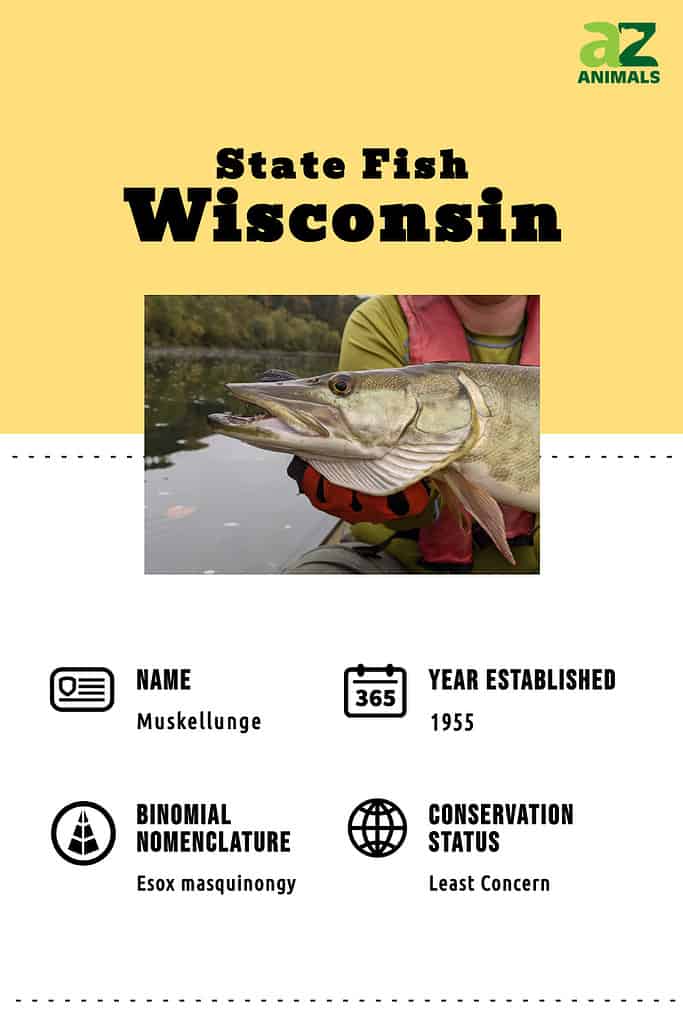
State Fish of Wisconsin
The muskellunge is the state fish of Wisconsin. Muskie, for short, is a freshwater fish species that is native to North America. It belongs to the family Esocidae and can be found in the Great Lakes region as well as many inland lakes and rivers throughout Wisconsin.
As the official state fish of Wisconsin, muskie fishing has become a popular pastime for both locals and tourists alike during the summer months. The muskie’s distinct appearance, with an elongated body, sharp teeth, and intricate patterns of spots on its scales, make it an attractive catch for fishermen seeking a challenge.
However, due to their size (they can grow up to 6 feet long) and elusive nature, catching a muskie requires patience and skill. They are known for being strong swimmers with powerful jaws that can make them difficult to reel in once caught.

Esox masquinongy, also known as muskie or muskellunge fish, is the state fish of Wisconsin.
©Engbretson, Eric / U.S. Fish and Wildlife Service, Public domain, via Wikimedia Commons – Original / License
Despite their popularity among anglers, muskies also play an important role in Wisconsin’s ecosystem. As apex predators at the top of the food chain in many bodies of water they inhabit, they help regulate populations of smaller fish species and maintain overall ecological balance.
In recent years there have been efforts made by conservationists to protect muskie populations through catch-and-release policies and habitat restoration projects. So whether you’re casting your line out into Lake Michigan or one of Wisconsin’s many inland lakes this summer season, keep an eye out for these fascinating creatures swimming below!
Description
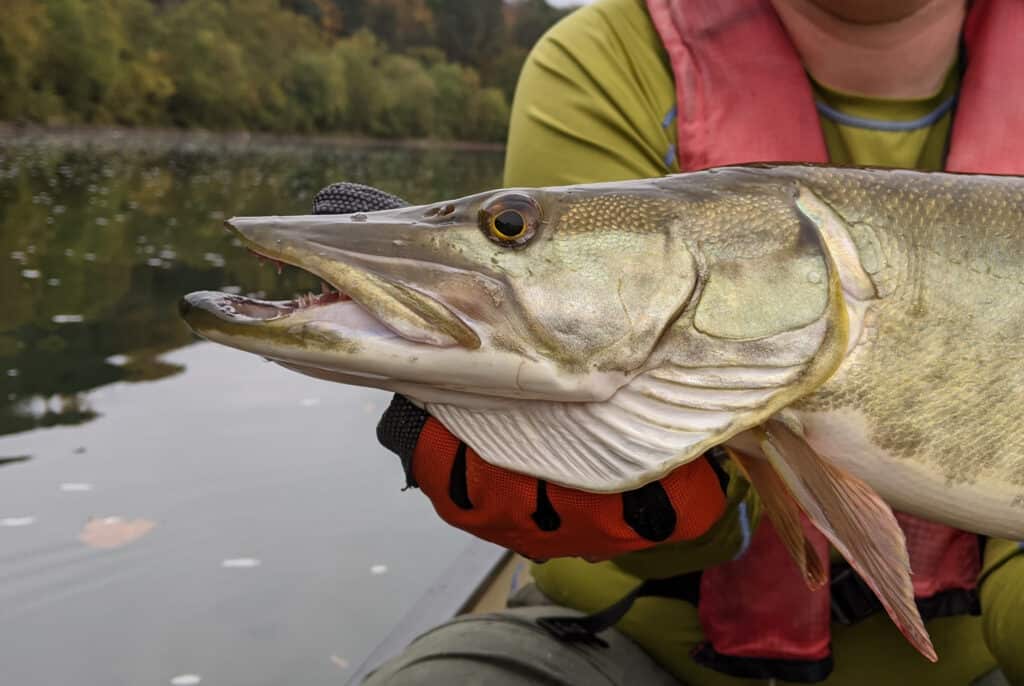
Most people know the muskellunge by its nickname, the muskie.
©M Huston/Shutterstock.com
The muskellunge, which is the official state fish of Wisconsin, is closely related to the northern pike and American pickerel. It has an elongated body, flat head, and fins that are set far back. Generally, it measures 28-48 inches long and weighs 15-36 pounds, although some have grown as large as 6 feet and nearly 70 pounds. This summer, you may have the opportunity to spot one in its natural habitat.
Martin A. Williamson caught a muskie with an impressive weight of 61.2 pounds in 2000 while fishing in Georgian Bay, Canada. The species is generally brown, silver, or green, with dark vertical stripes along the body. In some cases, the stripes may not be present at all, especially when the fish come from murky waters. A way to tell the difference between a muskellunge and a northern pike is to count the number of sensory pores on the underside of the lower jaw. Muskellunge have seven or more per side, while northern pike never has more than six. Additionally, the lobes of the tail fin on a muskellunge are pointed, while those of a northern pike are more round.
Habitat
The muskellunge fish, also known as the muskie, is a freshwater species that can be found in various habitats throughout Wisconsin. These fish prefer clear waters with ample vegetation where they can easily camouflage themselves and lurk along rock outcrops, weed edges, or other structures to relax. They are typically found in lakes and rivers but have been known to inhabit reservoirs as well.
During the summer months, a muskie forms two different home ranges: a shallow range and a deeper one. The shallow area is usually not as big as the deeper one due to shallow water warming up more quickly than deep water. In search of available food in appropriate conditions of water temperature, these fish continuously patrol their ranges.
In addition to their preferred habitat of clear waters with ample vegetation and structure for resting, muskies tend to gravitate towards areas where there is an abundance of prey, such as small baitfish or crayfish. They also prefer cooler temperatures during hot summer months, which leads them to seek out shaded areas like undercuts or overhanging trees.
Overall, understanding the habitat preferences and behavior patterns of muskellunge fish is crucial for those looking to spot them while fishing or simply observing them while enjoying Wisconsin’s beautiful outdoors this summer season.
Diet
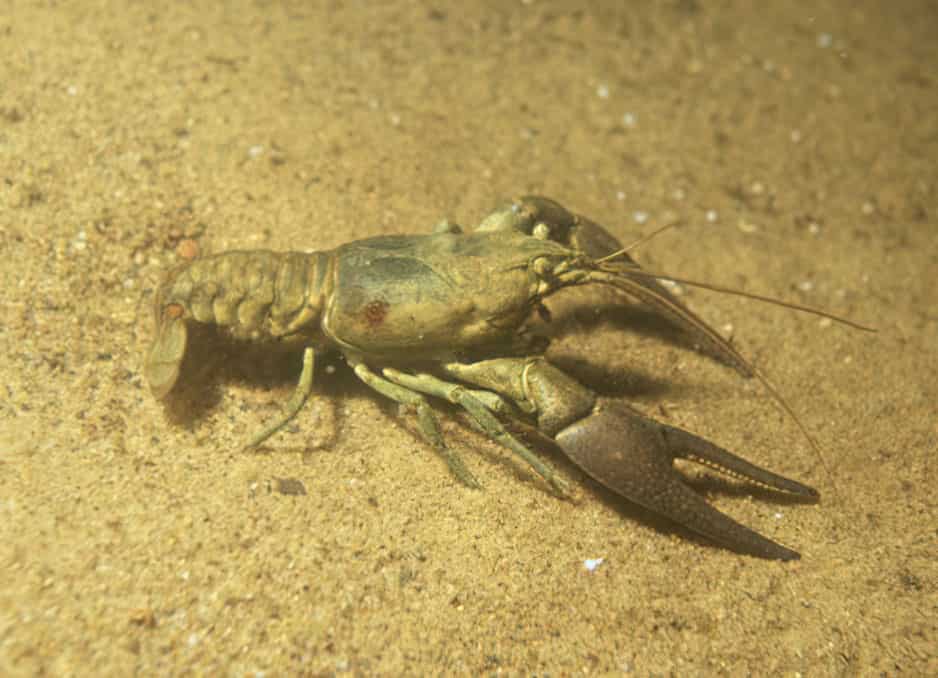
Musky fish eat Virile crayfish, Northern Clearwater crayfish, and Rusty crayfish.
Muskies, the official state fish of Wisconsin, are known for their predatory nature and ability to swiftly capture their prey. As ambush predators, they will hide in wait until a suitable target swims by before quickly striking with lightning-fast speed. Once caught, muskellunge swallow their prey head first, which allows them to digest it more efficiently.
These powerful fish are considered top predators in any body of water where they reside and have been known to devour bigger prey than most other freshwater species. They have a diverse diet that includes all varieties of fish present within their ecosystem (including other muskellunge), as well as occasional insects like beetles or dragonflies.
In addition to aquatic creatures, muskies will also consume land-dwelling animals such as rats, mice, frogs, and even ducks if given the opportunity. Due to their large stomachs and formidable size (some can grow up to 6 feet long), these fish are capable of taking down prey up to two-thirds of their body length. Rare instances have been reported of large muskellunge striking at little dogs, but these have not been verified.
Behavior
Muskellunge are fascinating fish that exhibit interesting behavior patterns. While they can often be found solitary or in pairs, these fish sometimes form small schools and establish different territories. During the mid-to-late spring months, which is somewhat later than northern pike, muskellunge begin spawning over shallow areas with plenty of vegetation. When it comes to selecting a location for spawning, these fish prefer rock or sand bottoms so that their eggs do not sink into the mud and suffocate.
The males typically arrive at the spawning grounds before females and attempt to establish dominance over territories through aggressive displays and behaviors. Spawning itself can last anywhere from five to 10 days and usually occurs under cover of darkness during nighttime hours. After fertilization takes place, the eggs become slightly adhesive and begin to sink. This helps them adhere to plants or the bottom of lakes, where they will develop further.
After mating has taken place, adult muskellunge abandon their offspring entirely, leaving them vulnerable to predators such as insects or crayfish, who may consume them before they hatch out of their eggs within two weeks after being laid. Once hatched successfully from their eggs (assuming predation did not occur), juvenile muskies live on yolk until their mouth fully develops, allowing them to feed on tiny crustaceans and other zooplankton found in surrounding waters.
Eventually, juveniles grow large enough that they start preying upon smaller fish species themselves. They reach around one foot long by the fall of their first year of life.
Where To See
When seeking a fishing experience, the first step is picking the body of water you want to try your luck in. Wisconsin has a variety of great musky rivers and lakes, some providing more action with lower potential for large fish, while others are known trophy producers with fewer muskellunge populations. The former tend to be smaller, shallower lakes with lots of vegetation, while the latter areas are bigger and deeper, with clear waters and a good food source for the predators. Most musky waters are somewhere in the middle.
You can find muskellunge in Boulder Lake, Big St. Germain Lake, Bloom Lake, and Lake DuBay, to name only a few.
How To Catch
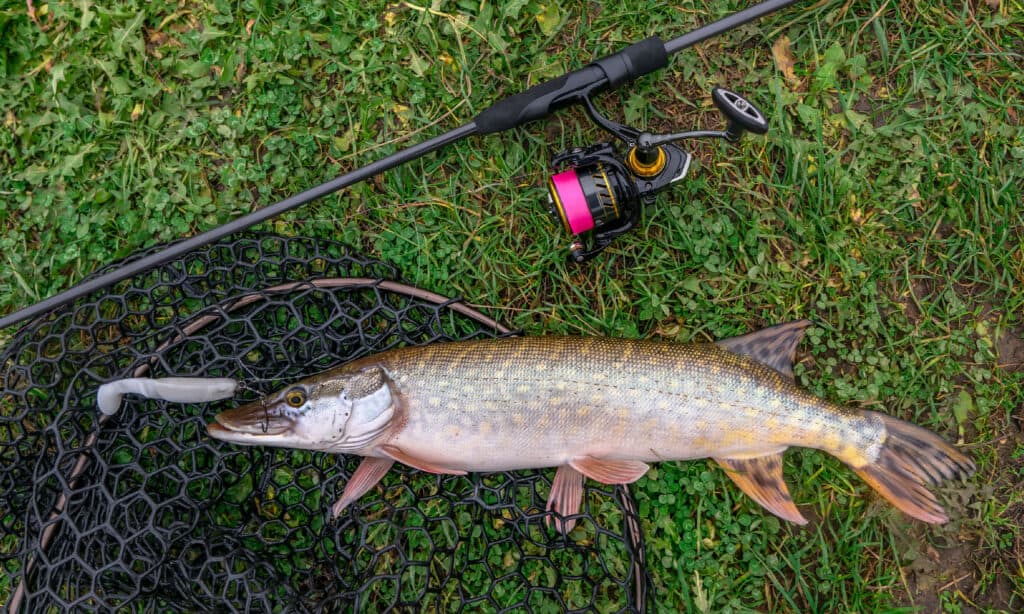
Musky are known for being elusive and difficult to catch.
©iStock.com/FedBul
Musky fishing is a thrilling and challenging experience that draws anglers from all over the world. The mystique of this sport lies in the muskellunge’s size, moody behavior, explosive strikes, and elusive nature. These fish are notoriously difficult to catch, earning them the nickname “the fish of 10,000 casts.” Despite their reputation as one of the most challenging trophies to come by, there are ways for anglers to increase their chances of a successful musky fishing trip.
Anglers looking to hook a musky typically use a variety of bait options, such as soft plastic lures, bucktails, glide baits, and crankbaits. Each type of bait has its own unique advantages depending on water conditions and the time of day. Soft plastic lures mimic natural prey items like worms or insects, while bucktails imitate small fish swimming through the water. Glide baits have an erratic motion that can trigger aggressive strikes from hungry muskies, while crankbaits create vibrations in the water that attracts attention.
While there is no guarantee when it comes to catching these elusive creatures, understanding their habitat preferences can increase your odds significantly. Muskies tend to inhabit deep weed beds or other areas with structures where they can ambush prey items like smaller fish or crayfish. They also prefer cooler waters which means early morning or late evening may be prime times for catching them during warmer months.
Thank you for reading! Have some feedback for us? Contact the AZ Animals editorial team.

